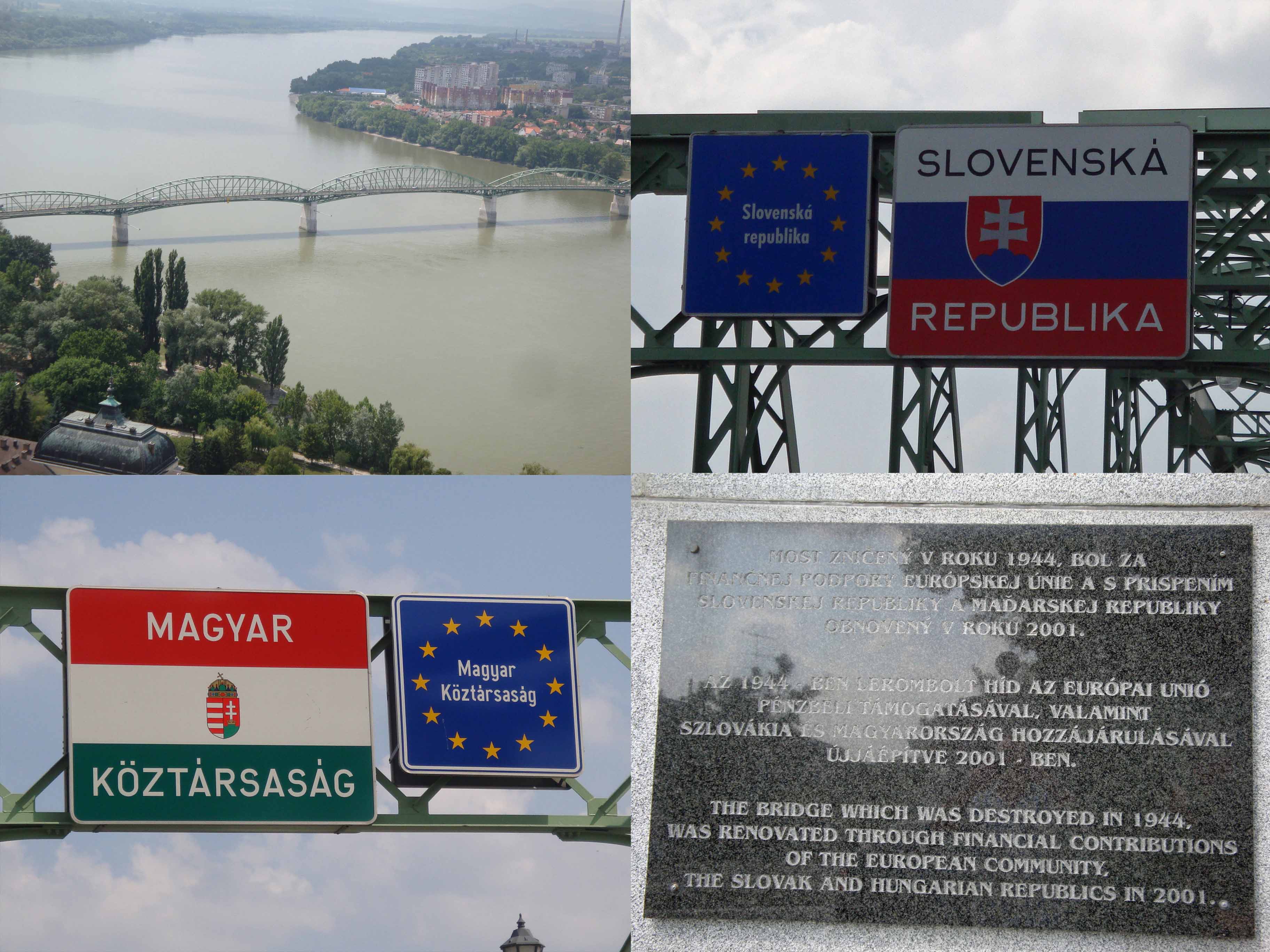Crossing the Danube, the Mária Valéria Bridge links Esztergom in Hungary with Šturovo in Slovakia.
But reading the sign on the bridge we learn that during the communist era it did not link Hungary with what was then Czechoslovakia for the simple reason that it had been left unrebuilt – if there’s such a word – since World War II.
How things have changed since its reconstruction. On a day trip from Budapest, my favourite city anywhere in the world, I was able to walk across the bridge from one country to the other without even having to show a passport.
The sign is in three languages: Slovak and Hungarian as one would expect together with English in its capacity as the international lingua franca.
The full stop at the end of each of the language versions feels redundant and there is clearly room for improvement in the English version, particularly in the positioning of the phrase ‘in 2001’. What follows is my attempt at an improvement.
Current English version:
The bridge which was destroyed in 1944, was renovated through financial contributions of the European Community, the Slovak and Hungarian Republics in 2001.
Proposed English version:
Destroyed in 1944, this bridge was reconstructed in 2001 with funding from the European Community and the Slovak and Hungarian governments
[separator style=”regular”]
As a postscript, I’m told that cipőfűző, which means shoelace, is regarded as the most beautiful word in the Hungarian language.
Presumably this has something to do with the three consecutive long front rounded vowels following hard on the heels of the initial – and therefore stressed – short front unrounded vowel: [ˈtsipø:fy:zø:]. And the fact that all the consonants in this word are front consonants only goes to confirm the rule – crosslinguistically – that words pronounced at the front of the mouth are generally regarded as more beautiful than words pronounced elsewhere. (I don’t suppose there is another word, consisting entirely of back vowels and consonants, regarded as the ugliest word in the Hungarian language.)
I’m not familiar with any word being regarded as the most beautiful word in English. While I have a particular affection for the words prehensile and genuflect, it’s not due to any specifically aesthetic qualities on their part.
Perhaps a language needs a phonological feature like vowel harmony, as Hungarian has, for its speakers to scan its lexicon in search of beautiful words.
[separator style=”regular”]
(Photos taken in July 2010)

